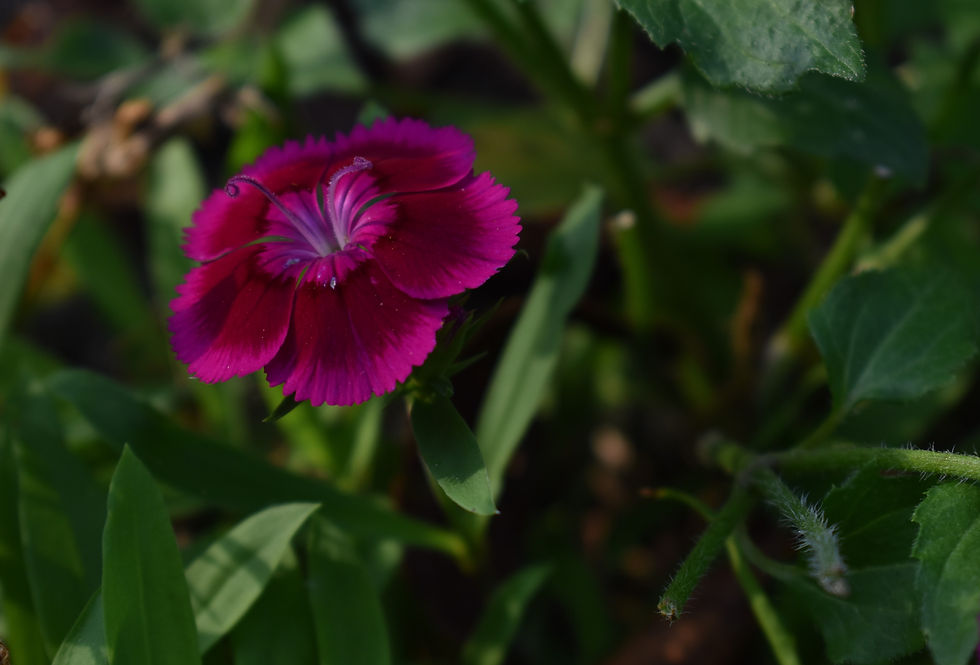MiniBlog: Dianthus
- GreenhouseMama

- Jun 24, 2024
- 2 min read
DIANTHUS
Dianthus, a delightful and versatile perennial, brings charm and vibrancy to gardens with its captivating blooms and easy-growing nature.
Appearance and Features:
Blooms: Dianthus showcases a myriad of captivating flowers in various hues, including shades of pink, white, red, and even lavender. These blossoms often boast intricate patterns and serrated edges, adding to their allure.
Foliage: The plant's slender, grass-like foliage provides an attractive backdrop to its colorful blooms. The foliage can range from blue-green to grayish-green, offering a lovely contrast to the flowers.
Size and Growth: Dianthus typically forms compact mounds, reaching heights of about 6 to 18 inches, depending on the variety. Its neat growth habit makes it an excellent choice for edging or border plantings.

Cultivation and Care:
Sunlight: Dianthus thrives in full sun to partial shade, requiring around 6 hours of sunlight daily for optimal growth and abundant flowering.
Soil and Watering: Well-draining soil is crucial to prevent root rot. Dianthus prefers slightly alkaline, moderately fertile soil. It's essential to avoid overly wet conditions.
Maintenance: Deadheading spent blooms encourages continuous flowering and keeps the plant tidy. Trim back stems after the initial bloom to stimulate new growth and potential reblooming.
Pruning: Regular pruning helps maintain shape and prevents legginess. Trim back by a third after flowering to promote compact growth.
Propagation:
Division: Dianthus can be divided every few years in early spring to rejuvenate the plant and create new specimens. Carefully separate clumps and replant them in suitable locations.
Landscape Use:
Edging and Borders: Dianthus is a charming addition to garden borders, edgings, and rock gardens, offering a burst of color and fragrance.
Containers: Compact varieties of dianthus thrive in containers, adding color and texture to patios, balconies, or window boxes.
Cut Flowers: Some varieties of dianthus make wonderful cut flowers, bringing their captivating beauty indoors.
Pest and Disease Resistance:
Resilience: Dianthus is relatively resistant to pests and diseases. Adequate air circulation and proper watering practices can prevent issues like powdery mildew.

Fragrance and Attraction:
Fragrance: Many dianthus varieties boast a delightful spicy or clove-like fragrance, adding an aromatic dimension to gardens.
Pollinator Attraction: The fragrant blooms attract pollinators like bees and butterflies, enhancing the biodiversity of the garden.
Conclusion:
Dianthus, with its vibrant blooms, charming fragrance, and compact growth habit, is a versatile perennial that adds elegance and color to various garden settings. Whether used as edging, in borders, containers, or even as cut flowers, dianthus remains a favorite among gardeners seeking a beautiful and low-maintenance addition to their landscapes. With its adaptability to different soil conditions, resistance to pests and diseases, and a penchant for thriving in sunny spots, dianthus proves to be an excellent choice for both beginner and seasoned gardeners looking to infuse their outdoor spaces with enduring beauty and fragrance throughout the blooming seasons.







Comments